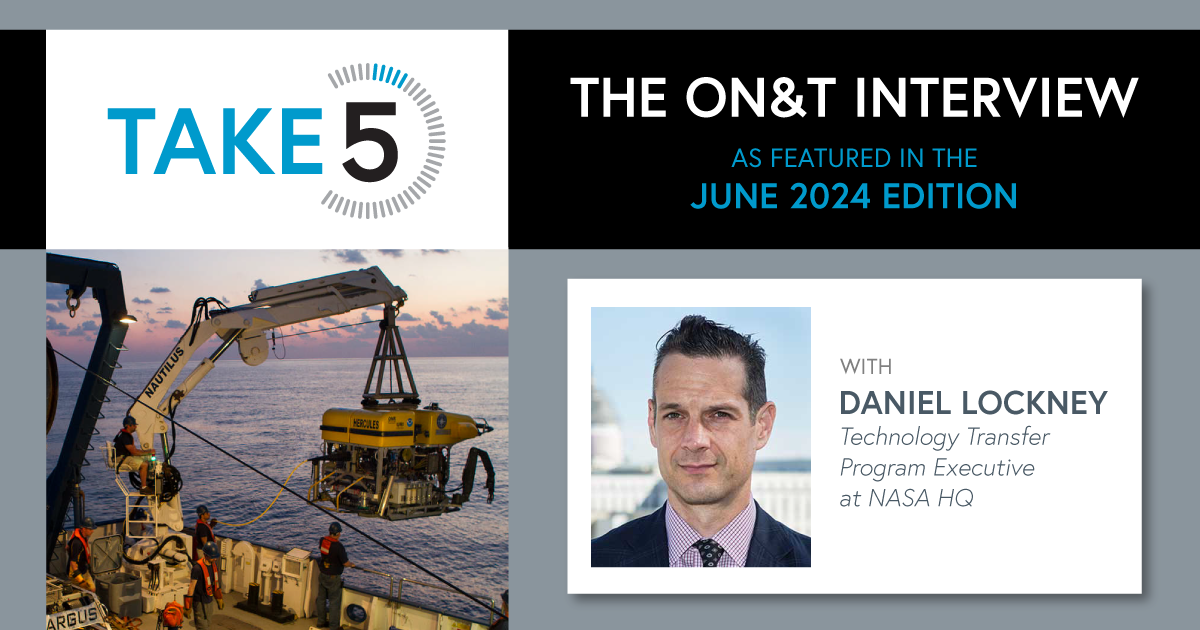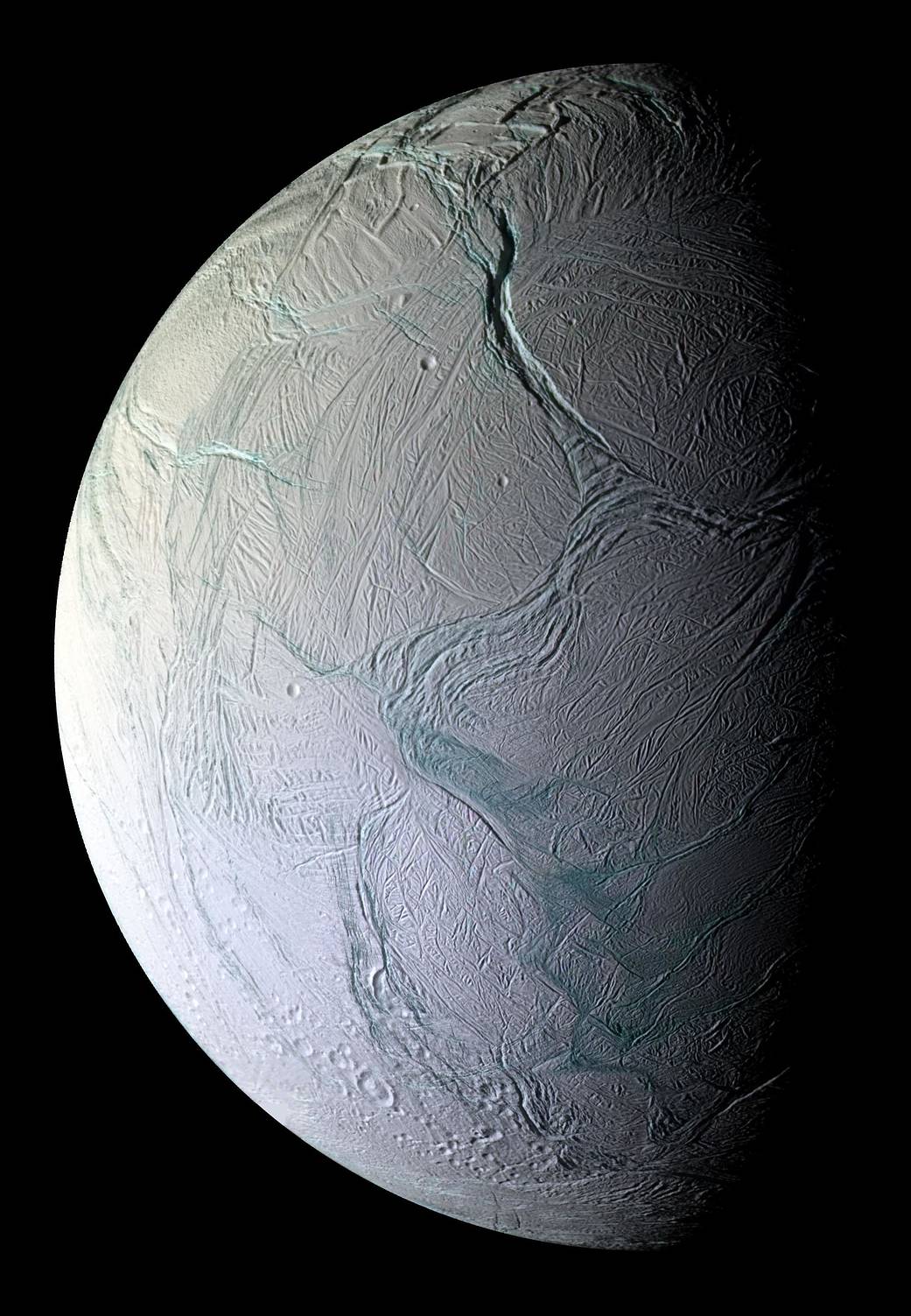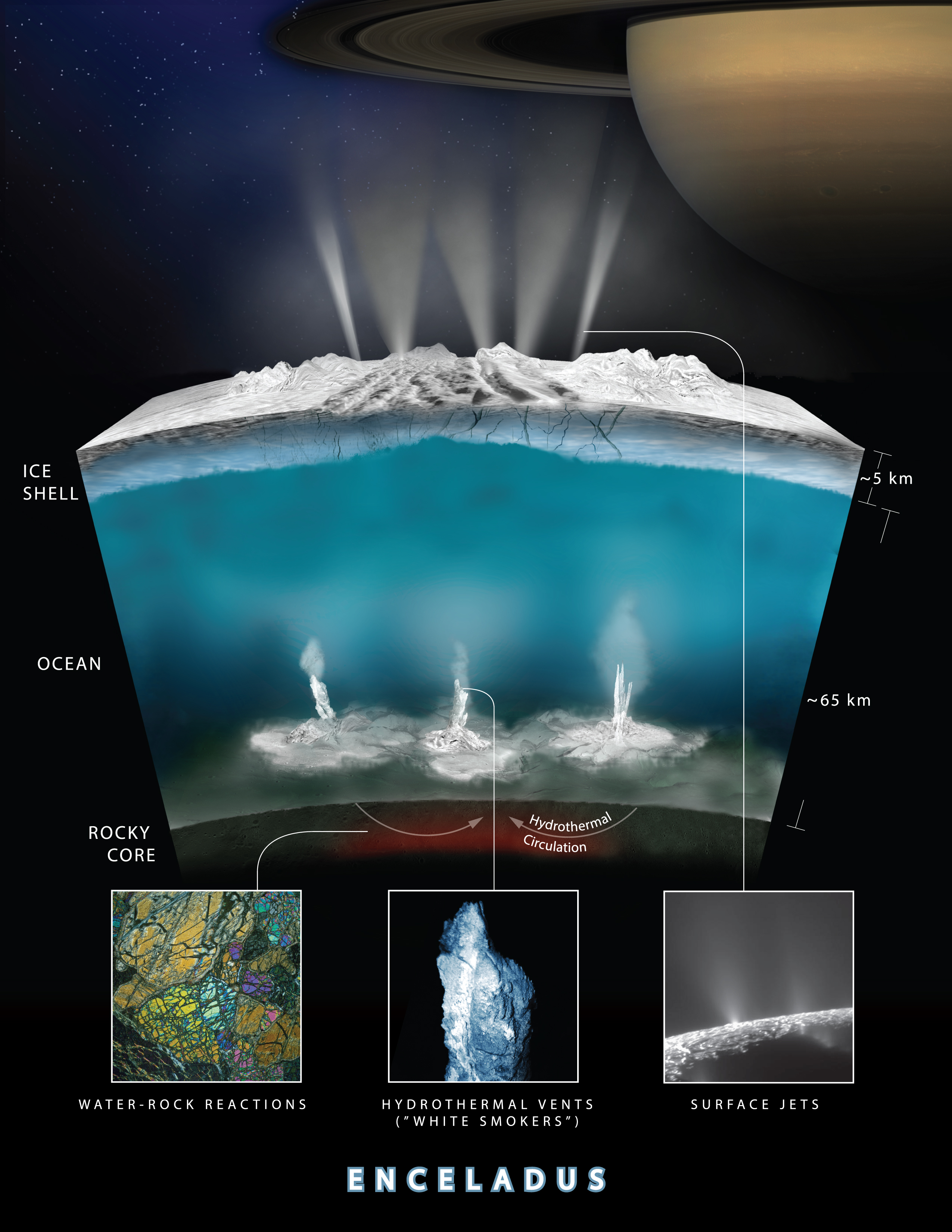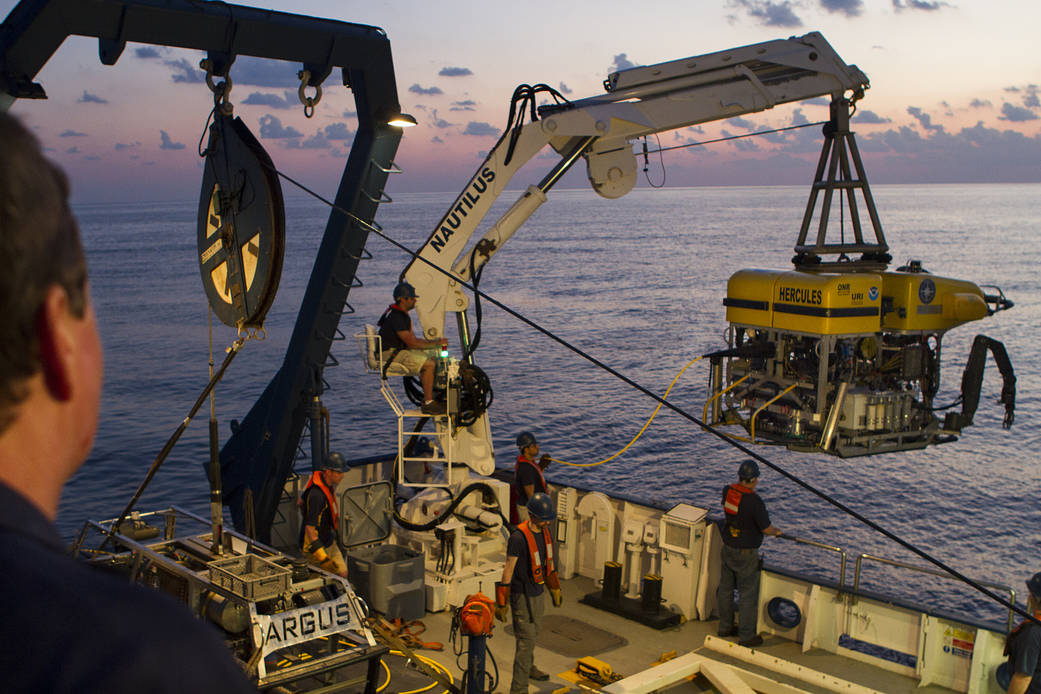
Should you be interested in participating in a future TAKE 5 interview, please get in touch at editor@oceannews.com.


NASA is perhaps more immediately associated with mapping the stars, but the agency also has an extensive Earth Science program, one that traditionally has focused on using the latest technologies to observe the planet from orbit but is now also exploring novel ways of mapping the seabed. We spoke to Daniel Lockney, Technology Transfer Program Executive at NASA Headquarters in Washington, DC, to find out more.
1. What is NASA’s role in mapping the seabed?
Only about a quarter of the Earth’s oceans have been mapped to any meaningful resolution, so there is a lot of interest in charting the rest for a multitude of reasons. NASA’s direct involvement in an effort to map the seabed was triggered by a mission to measure the salinity of Earth’s oceans led by the agency’s Jet Propulsion Laboratory (JPL) in Southern California.
The satellite instruments had to be calibrated with sensors in the water, and this is how mission project scientist Yi Chao became familiar with the power limitations of subsea robots—their operation is limited by battery life.
Chao and a couple of colleagues at JPL set out to design a device that could use changes in ocean temperature to charge batteries. Once they had working prototypes, Chao founded Seatrec and licensed the technology he had invented at NASA. As the company brought its technology to market, it identified a number of potential applications, including mapping the seafloor.
As many of your readers no doubt will attest, mapping from vessels on the surface is extremely costly and requires a high-powered sonar to cut through noise in the upper ocean. Mapping with robots just half a kilometer down could be done with far less power consumption and disruption to marine life.
2. How does this new technology work?
Seatrec’s technology is based on a phase-change material. NASA often uses phase-change materials, which transition between liquid and solid at a certain temperature of interest, to manage the extreme temperatures of space. Seatrec chose a paraffin-family material with a melting point around 50°F, which is between the temperatures deep in the ocean and at the surface.

Saturn's moon Enceladus hides an ocean beneath its icy crust. Water interacting with rock on the seafloor could potentially yield chemical reactions that would make microbial metabolism possible. (Credit: NASA)
As a power module rises into warmer water, its phase-change material melts, causing it to expand. This increase in volume turns a motor that charges the battery—much like a steam engine works, except the change from solid to liquid produces only about a 10% expansion, so Chao and his JPL colleagues had to make the devices extremely efficient to run on such a small amount of energy.
Although Seatrec’s technology was created specifically for use in the seas, it’s not at all uncommon for technology NASA develops for space exploration to be repurposed for use in the oceans. Both space and the deep sea are harsh, remote environments that present many of the same challenges. The agency’s Spinoff publication has documented a number of commercial adaptations of space technology for deep-sea use, including underwater robots based on robots for space, rugged deep-sea fuel cells stemming from work on space shuttle fuel cells, and offshore oil rig blowout preventers powered by solid rocket propellants, among others.
3. How is NASA partnering with the private sector in such endeavors?
Through its Technology Transfer program, NASA has a number of avenues for working with businesses to help the private sector benefit from the agency’s technology development. One is the patent license, such as Seatrec’s licensing of the technology Chao developed at JPL. The agency works tirelessly to patent its inventions and get them into the hands of companies and entrepreneurs. The Technology Transfer program has compiled a portfolio of around 1,500 patents that are available for licensing under various terms, including startup and evaluation licenses that come at no cost for limited times.
The Technology Transfer program also partners with academic institutions, entrepreneurial and investment communities, and others through events and outreach initiatives to assist and encourage licensing of NASA technology.
The program also manages a similar NASA Software Catalog that makes over 1,000 programs invented at the agency available through Software Usage Agreements, often free of charge.
NASA also frequently enters into Space Act Agreements—and occasionally other agreements such as Cooperative Research and Development Agreements and Announcements of Collaboration Opportunity—to develop technologies together with private companies. And the agency funds private technology development through Small Business Innovation Research contracts, Tipping Point funding, and other mechanisms.
4. So, how does NASA see the growing utility of subsea drones in future scientific exploration?
In its hunt for signs of extraterrestrial life, NASA has, in recent years, been eyeing icy moons around Saturn and Jupiter that are thought to hide vast oceans beneath their frozen crusts. Engineers at JPL are exploring several robotic concepts for accessing and exploring these alien oceans.
These would face far greater challenges than any oceangoing robots on Earth, including the need to penetrate miles of ice, send communications back through that icy mantel, and operate under extreme pressure. Among the approaches under development are the Buoyant Rover for Under-Ice Exploration, which would roll along the underside of the ice; the Sensing With Independent Micro-Swimmers concept, which would deploy a swarm of cellphone- sized robots to explore subsurface oceans, and the snakelike Exobiology Extant Life Surveyor that would slither through narrow vents in the icy crust.

Artist rendering showing an interior cross-section of the crust of Enceladus, which shows how hydrothermal activity may be causing the plumes of water at the moon's surface. (Credit: NASA)
No concept is likely to be finalized, however, before the Europa Clipper spacecraft arrives at Jupiter’s moon Europa in 2030 and begins gathering data about the moon, including images of its surface, radar sounding below the surface, and chemical analysis of the water expelled from vents in the ice.

The use of underwater robots to explore the environment around a deep-sea volcano off the coast of Hawaii that has simlar conditions to what may exist on Saturn's moon Enceladus. (Credit: NASA)
5. How will NASA’s Technology Transfer program continue to influence ocean tech development?
The upcoming Artemis missions—to begin long-term operations on the Moon—will require a lot of technology capable of functioning at least semi-autonomously under harsh conditions in a distant location, much of which is likely to be relevant to deep-sea operations. Projects for exploring icy moons will ultimately need to overcome far greater challenges, likely necessitating even more innovative technological approaches.
As NASA’s engineers invent the technology that will be necessary for these missions to succeed, the agency’s Technology Transfer program will evaluate their applicability to industry, patent those with possible applications, and reach out to the business and academic communities, inviting them to explore possible uses and benefits of these innovations. Eventually, at least some of that technology is almost sure to make its way to the bottom of the sea.
For more information visit: nasa.gov
This story was originally featured in ON&T Magazine’s June 2024 issue. Click here to read more.

Ocean News & Technology
is a publication of TSC Strategic
8502 SW Kansas Ave
Stuart, FL 34997
info@tscpublishing.com